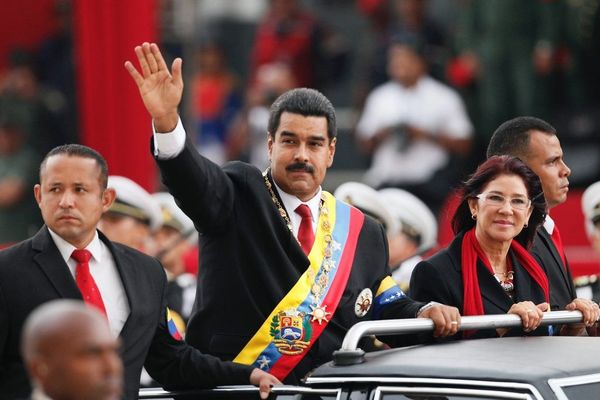During his campaign, President-elect Donald Trump repeatedly slammed the Trans-Pacific Partnership (TPP) as a "bad deal" that would harm U.S. workers and export jobs to Asia. He has promised to renegotiate the agreement, or more likely, back out altogether. For TPP partners and American allies in the region, this is troubling news. The agreement is already near ratification in many TPP countries and the prospect of an American exit has cast the future of free trade in the Asia Pacific into doubt. The Cipher Brief spoke with former Deputy Director-General of the Economic Affairs Bureau at Japan’s Ministry of Foreign Affairs, Dr. Yorizumi Watanabe, to look at what Japan and Asia are expecting from Mr. Trump’s trade policies.
The Cipher Brief: What is the biggest benefit of TPP to Japan in your mind?
Yorizumi Watanabe: The U.S. and Japan have had a security pact since the 1960s, but interestingly enough, we don’t have any kind of free trade agreement (FTA). The TPP is actually the first time that we will have this kind of agreement with the U.S. For that reason, the TPP may be the most important strategic partnership in Japan’s portfolio. It’s virtually a Japan-U.S. FTA with 10 more countries added on, so I would actually call the TPP an economic security pact, because whenever we have economic or trade disputes, this is the agreement that we can always come back to to provide a legal structure to settle these disputes. This is the greatest benefit of the TPP for me: it is the ultimate FTA with the ultimate partner for Japan.
TCB: Clearly U.S. participation in the TPP is very important for Japan, what happens if the Trump administration decides not to ratify the agreement?
YW: For the time being we hope that the U.S. will ratify the TPP as soon as possible. We have not given up on this hope yet, and in order to show Japan’s determination, the Abe government put TPP-related legislation before the Diet, which has now passed both the upper and lower houses.
TCB: But if the Trump administration does step back from TPP, do you think there is the possibility that TPP’s remaining members will continue the agreement without America, and is there an opportunity for Japan to play a leadership role within that new framework?
YW: I think it’s still premature to talk about TPP minus one, because we are still committed to keeping the current agreement, especially as we push forward with our ratification process. We have no alternative, no Plan B for the TPP’s failure.
Japan does have arrangements to fall back on. We are already in or negotiating 15 regional and bilateral FTAs – called economic partnership agreements (EPA) – with countries from Singapore to Mongolia. We are also negotiating with the European Union on a Japan-EU EPA to be concluded by the end of this year; we have the Regional Comprehensive Economic Partnership (RCEP), which is comprised of 16 countries; we are negotiating the Japan-China-Korea trilateral FTA (JCK), and so on. All of these agreements began in 2013, which was the year we decided to decisively move ahead with what I call the mega-regional FTAs.
TCB: So regardless of what happens in Washington, Japan will be moving ahead with these sorts of projects?
YW: Yes, trade liberalization, liberalization of investment and economic activity. Absolutely, yes, we will be continuing this trend.
TCB: Much has been made of the value of the TPP to not only reduce tariffs but also establish new global norms and procedures that can help establish a more liberal trading environment, both within the partnership and as a model for other agreements. Do you see a risk that this aspect of the agreement will be undermined if the TPP loses prominence?
YW: Yes, because there is a kind of international politics of economic development within East Asia. All countries want to provide protection to domestic industries, there is always the tendency toward protectionism everywhere. In this context, the TPP plays a leading role for other regional agreements such that, if TPP moves ahead, deals like RCEP will be stimulated to move their own liberalizations forward.
Looking at RCEP membership, you have smaller members, like Myanmar, which are quite protectionist, and you also have larger markets, like India, which are not very dependent on trade. India’s market is quite large, but they don’t depend on exports, so they have very little incentive to liberalize their own trade. In order for RCEP to move ahead, it needs input from TPP. In terms of the maturity of negotiation, the TPP is far ahead of RCEP, it has already been signed and even ratified by some member states. RCEP is not yet at this point, so in a way, TPP’s progress has been pulling RCEP negotiations forward in its wake. The TPP is kind of a condition sine qua non for the liberalization of trade and investment in the Asia Pacific region. Without the TPP, RCEP will lose its momentum. Even China might lose its appetite to move ahead with further international trade liberalization. Thus, if TPP fell apart because the U.S. refuses to ratify, then RCEP will also stagnate. TPP has this kind of indirect effect, not just on RCEP, but also on the trilateral JCK agreement, or even on agreements like the Trans-Atlantic Trade and Investment Partnership between the U.S. and the EU.
The TPP is not only important for the United States and the Asia Pacific but world trade as a whole. The agreement has global ramifications, so I hope that the next administration will keep that in mind.
TCB: It’s interesting you say that because a popular argument against scrapping the TPP in the U.S. has centered around the idea that we might give China the opportunity to step into the void with deals like RCEP by doing so. But you’re actually saying it may have the opposite effect?
YW: That argument might be possible but only if China is continuously motivated to liberalize their trade. Yet, if you look at the Korea-China bilateral FTA concluded in November 2014, the level of liberalization is actually very low. Only 71 percent of tariff lines are subject to elimination, and they completely excluded auto and auto parts, which is quite a substantial thing to set aside. China is not naturally motivated to make these kinds of concessions. However, if TPP exists, then Beijing will think of what it needs to do in the long term to join it.
When I went to China three years ago, people were a bit wary of TPP because they thought it might be a new type of containment policy. But then Deputy Secretary of State Antony Blinken came to Japan and gave a speech in which he made very clear that the TPP is not a containment policy, it is designed to provide China with the opportunity to play a role as a responsible stakeholder in the region.
Very conservative or traditional people in China might think that the country is not ready to liberalize like this, that it needs to protect its massive SOEs [state-owned enterprises], but there are reform-minded Chinese as well who see that the TPP, RCEP and other agreements are complementary to each other, not competitive. These people have tempered Chinese criticisms of TPP. The saying now goes, for some, that RCEP is Chinese medicine, TPP is Western medicine, and if you want to get better you might need both. If TPP fails, the influence of reform-minded Chinese might diminish, and more conservative leaders might take over.
TCB: If the U.S. did move toward a focus on bilateral trade agreements, which is something Mr. Trump has talked about a lot, would Japan be interested in engaging on that level?
YW: No, I don’t think so. Because, as I said, TPP is virtually the same as a new bilateral agreement with the United States for us, and that has been one of its biggest selling points. The U.S. and New Zealand are the only countries in TPP that Japan does not already have a bilateral agreement with, and though New Zealand is a great country, the U.S. is our most important partner.
For us, we view the TPP as an American initiative and an American agenda that we have already agreed to, so why should we start again? We have put so much political energy into this agreement, why should we make another bilateral agreement? Furthermore, the plurilateral nature of TPP makes it attractive for Japan because Asian production networks are so integrated. So no, the idea of replacing TPP with a bilateral agreement is a non-starter for us.
TCB: Where do you see U.S.-Japan relations going over next five to 10 years, and what would you tell trade critics in the West to convince them of the need for agreements like the TPP?
YW: I would ask them to look at the figures. Japan has been investing in the U.S. quite massively, and in terms of the infrastructure investment that Mr. Trump talks about, Japan could be very helpful. Not only with things like bringing the Shinkansen bullet train to America but also water supply, electricity generation, smart grids, etc. Japan can cooperate on all of this.
Right now, we are the second-largest investor in the U.S. after the U.K., but after Brexit the British pound has been falling, so if that continues, we may become No. 1. in the auto industry alone, this investment has created 1.5 million jobs, and roughly 75 percent of all Japanese cars sold in the U.S. are produced here.
So I think if people look at the facts, they will realize how closely the Japanese and American economies are interconnected, and in order to keep growing, we need to keep this link strong. The TPP will only help strengthen this link. The first thing I would like to ask the Trump transition team is to please just read through the agreement and look at what is there. The SOE issue, investment settlement, market access, all of the issues that are important to America are there. It is truly a great loss if the United States does not follow through with ratifying this deal.













